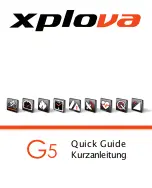
PV Glider Manual v. 2 rev B www.glidebikes.com
11 of 11
Brake pad alignment
Squeeze the brake lever toward the handlebar to make sure the brake moves freely and
stops the bike. If the brake lever can be pulled to the handlebar, the brake is too loose. To
adjust brake tighter unscrew cable adjusting bolt counter clockwise until brakes stop wheel
and lever can be pulled without hitting the handle bars . If the brakes are not properly
adjusted take your glider to your local bike shop for service.
Avoid leaving your glider out in the weather. Ultraviolet radiation from the sun may fade the
paint, or crack the rubber and plastic on the glider. Water can corrode the bearings in the
wheels.
Warning
The following riding practices increase the risk of injury to you and the risk of damage to
your glider:
• Hopping or jumping your glider
• Performing stunts
• Off-road riding
• Any abnormal riding
Each of these practices increases the stress on every part of your glider. Frames or parts
under high stress may fatigue prematurely, causing them to fail and increasing the risk of
injury to the rider. Avoid these riding practices to decrease your risk of injury.
Carefully inspect your glider for signs of fatigue:
• Dents
• Cracks
• Deformation
If any part shows signs of damage or fatigue, replace the part before riding the glider.
This maintenance schedule is based on normal usage. If you ride your glider more than
average service your glider more often than the schedule suggests. If any part appears to
be malfunctioning, inspect and service it immediately or consult Glide bikes or your Glider
dealer.





























